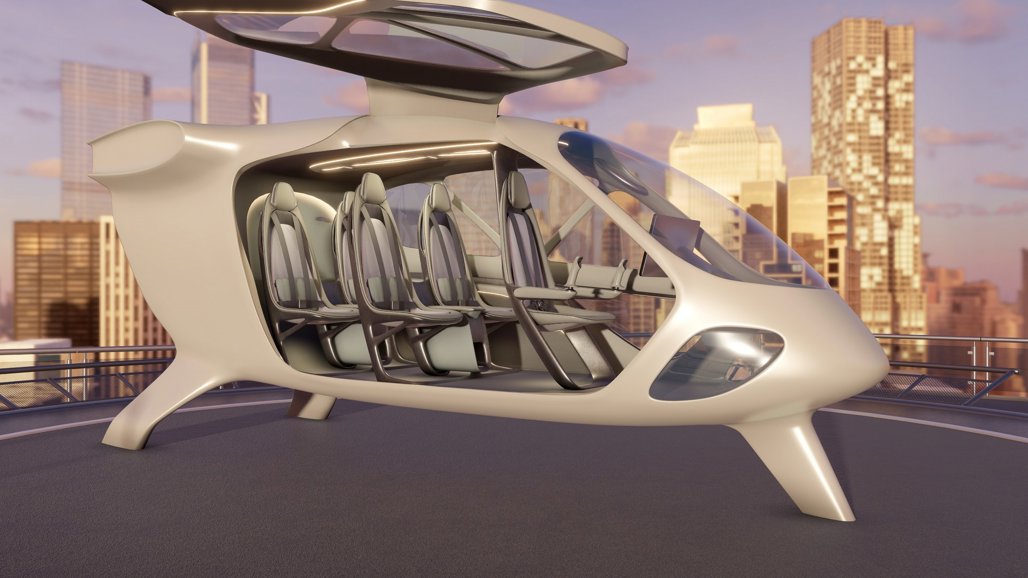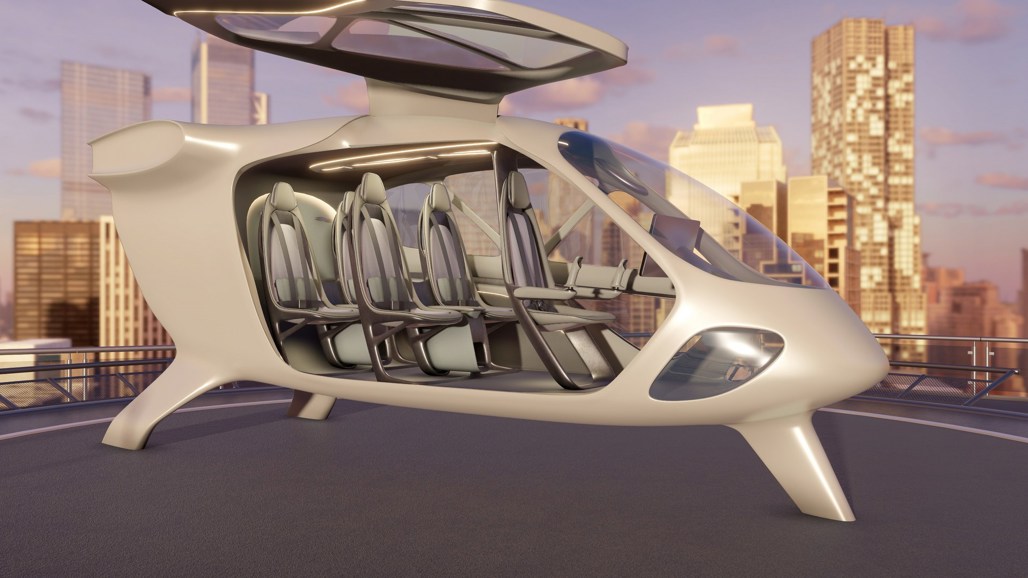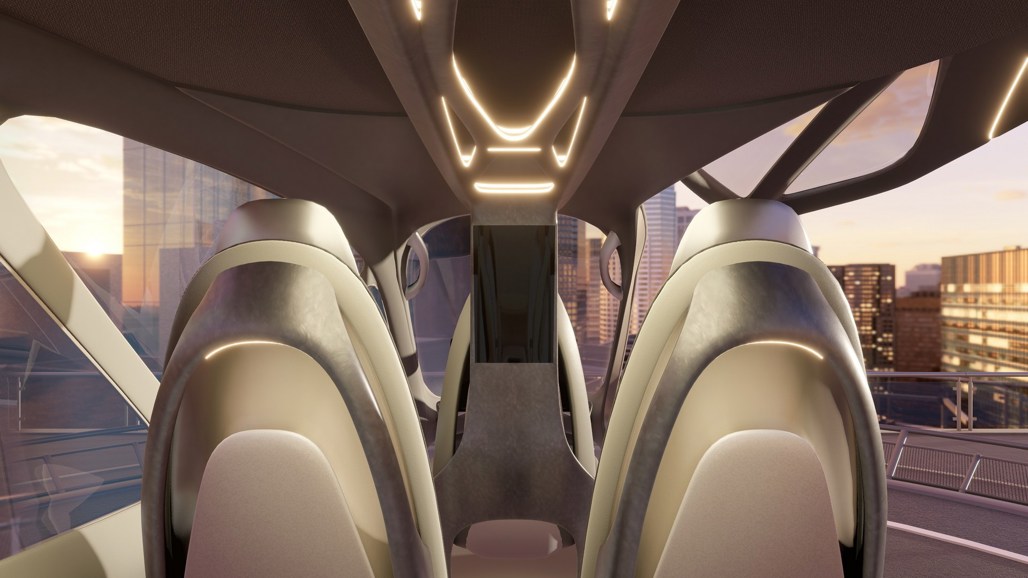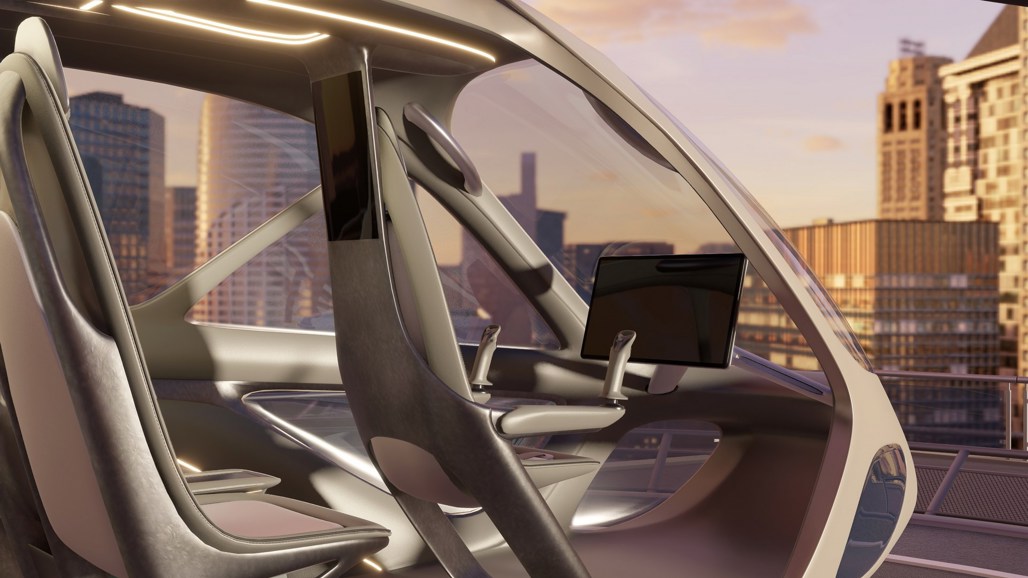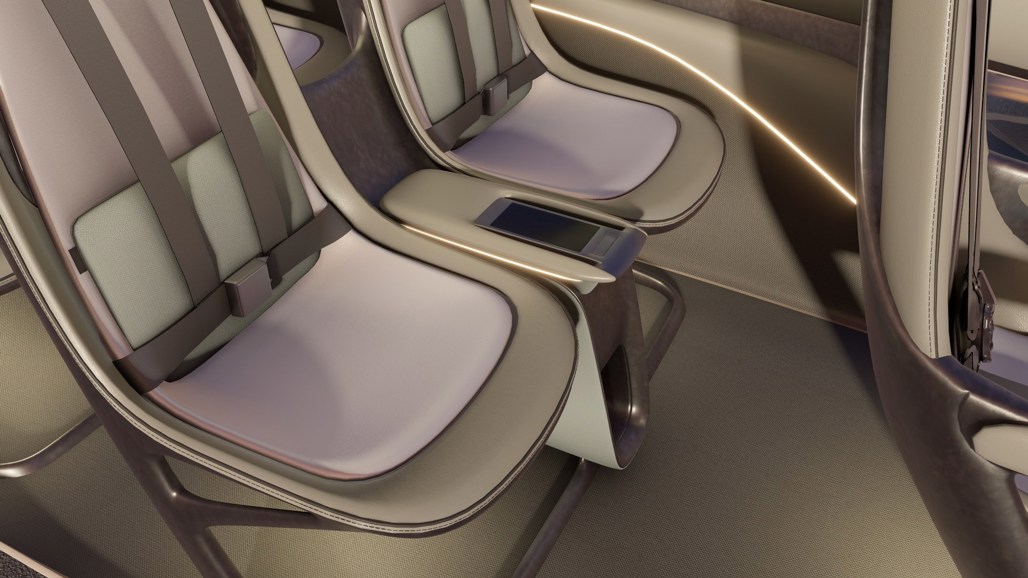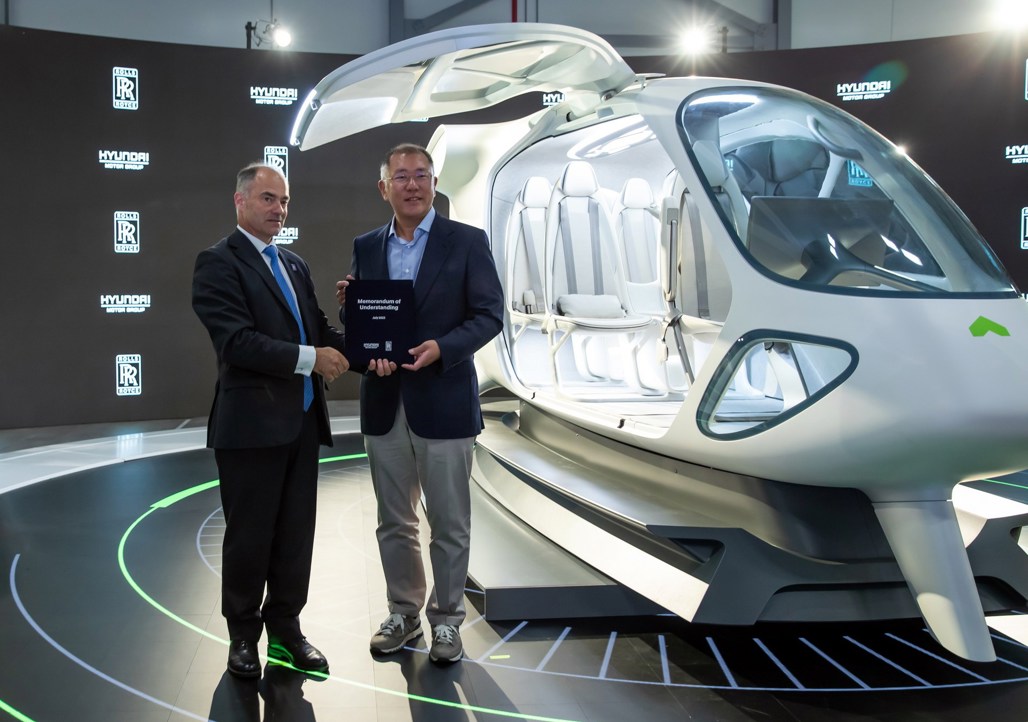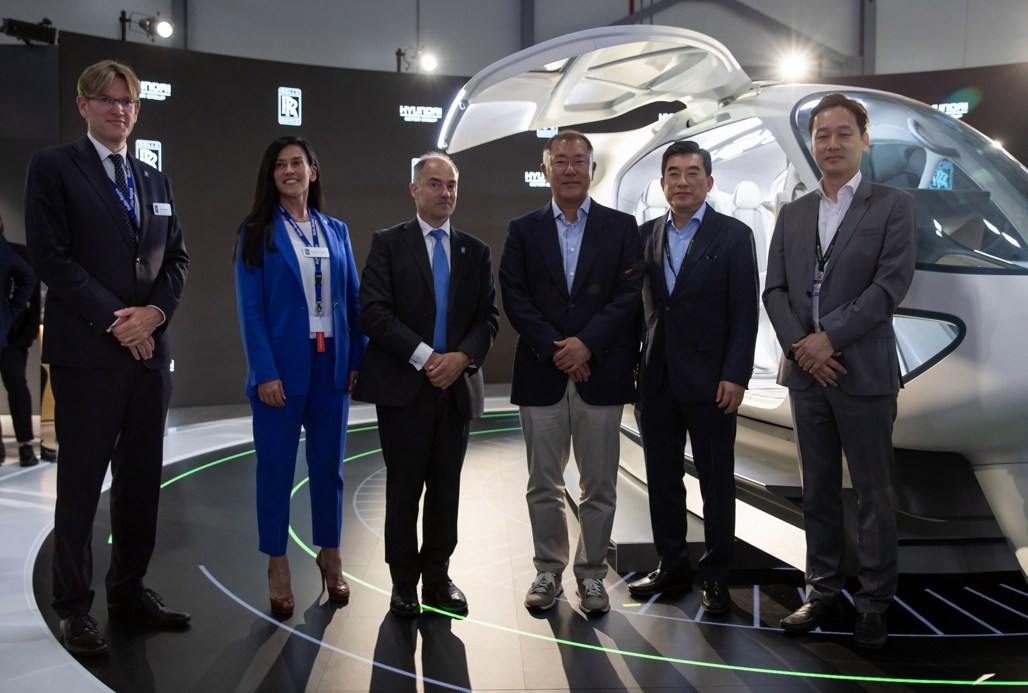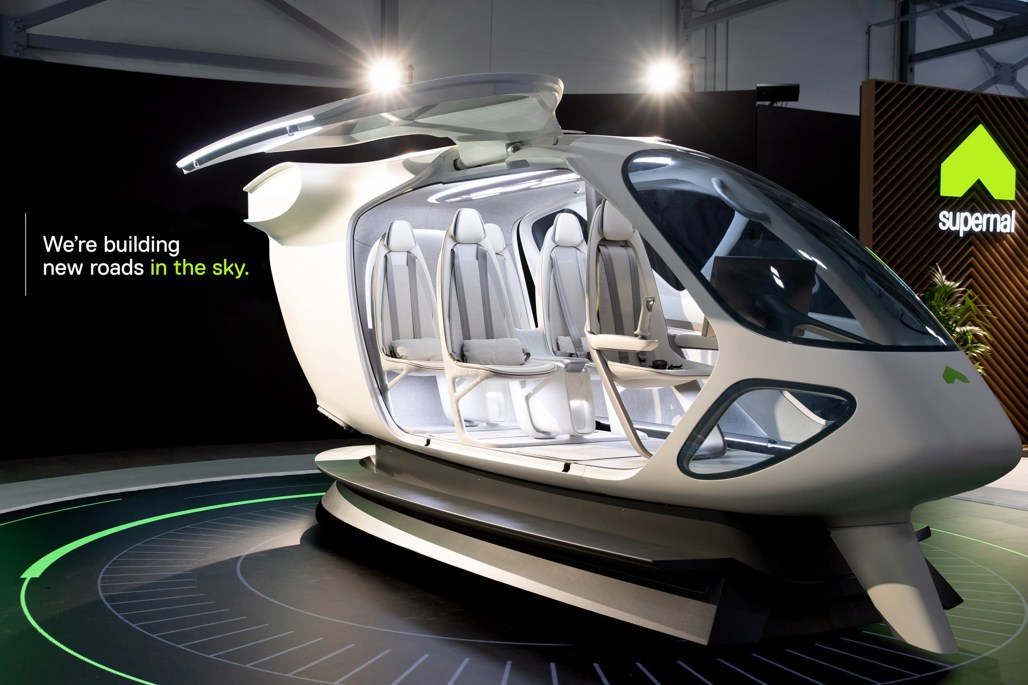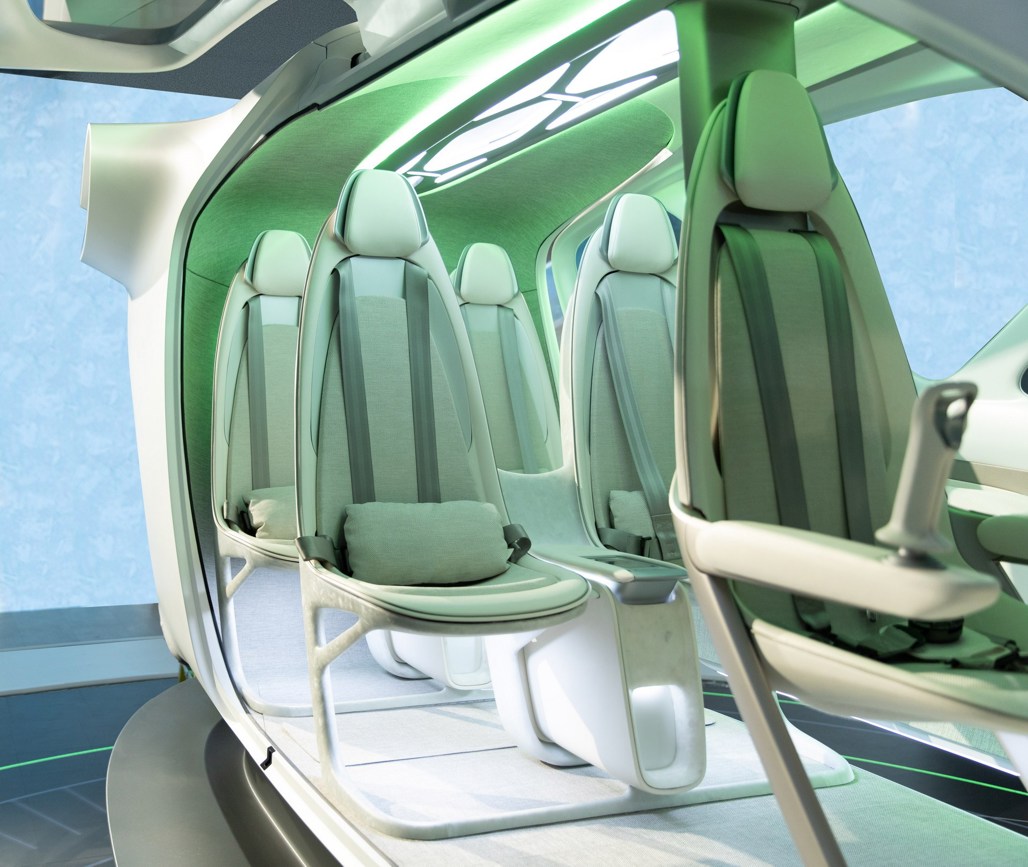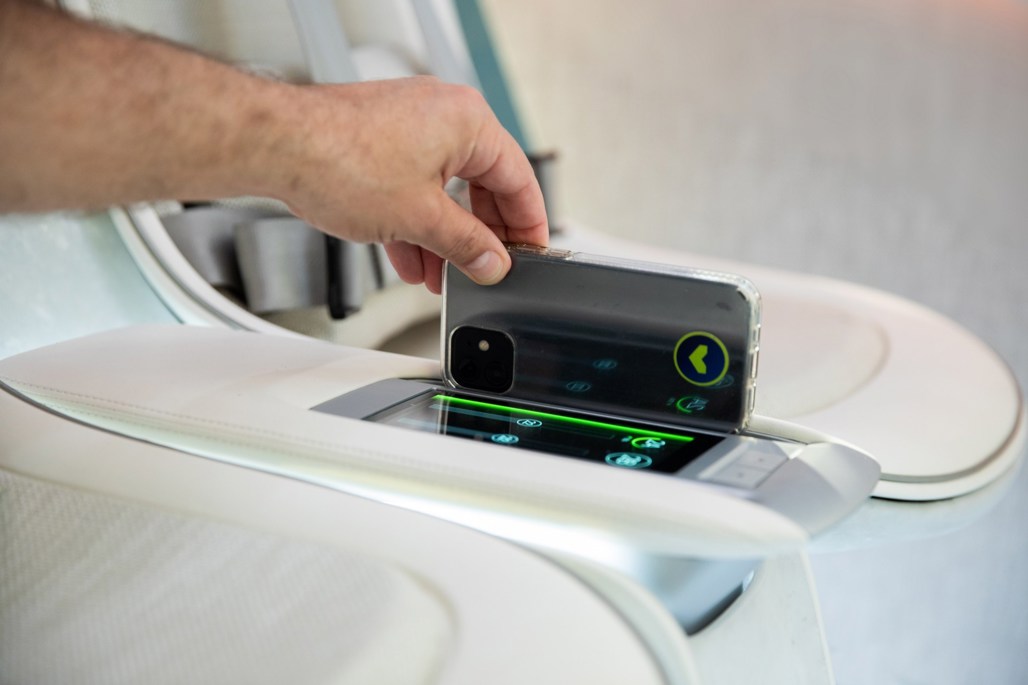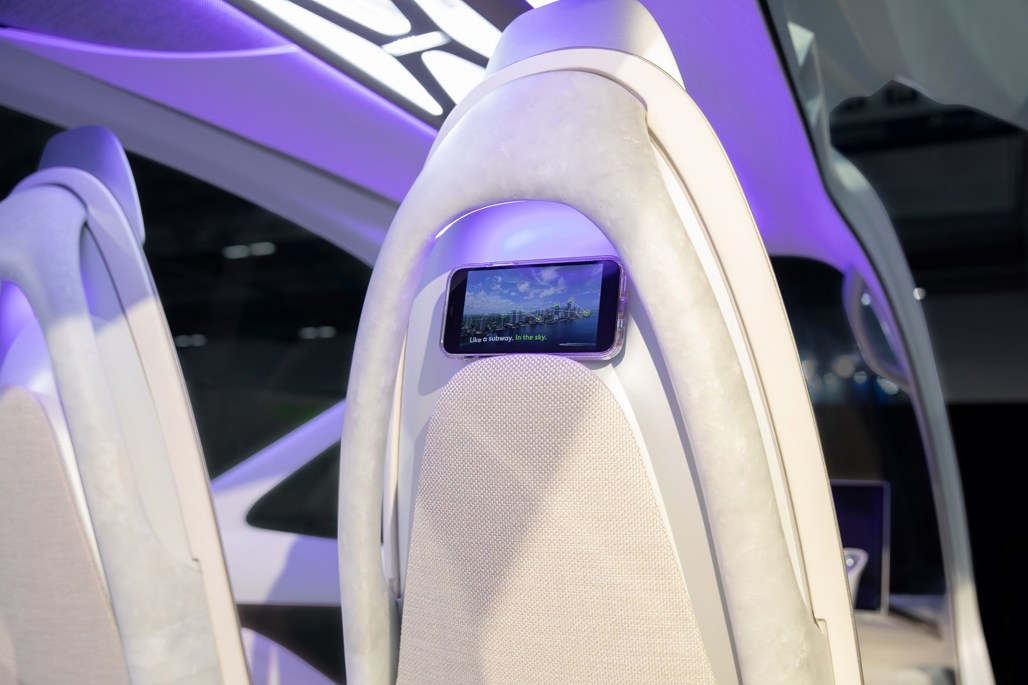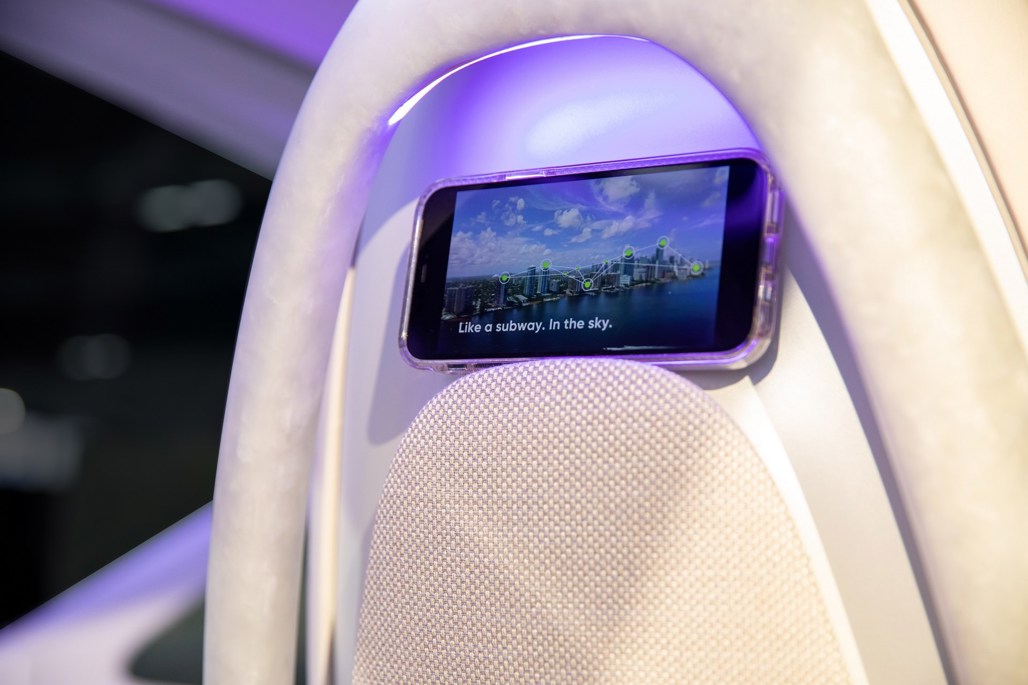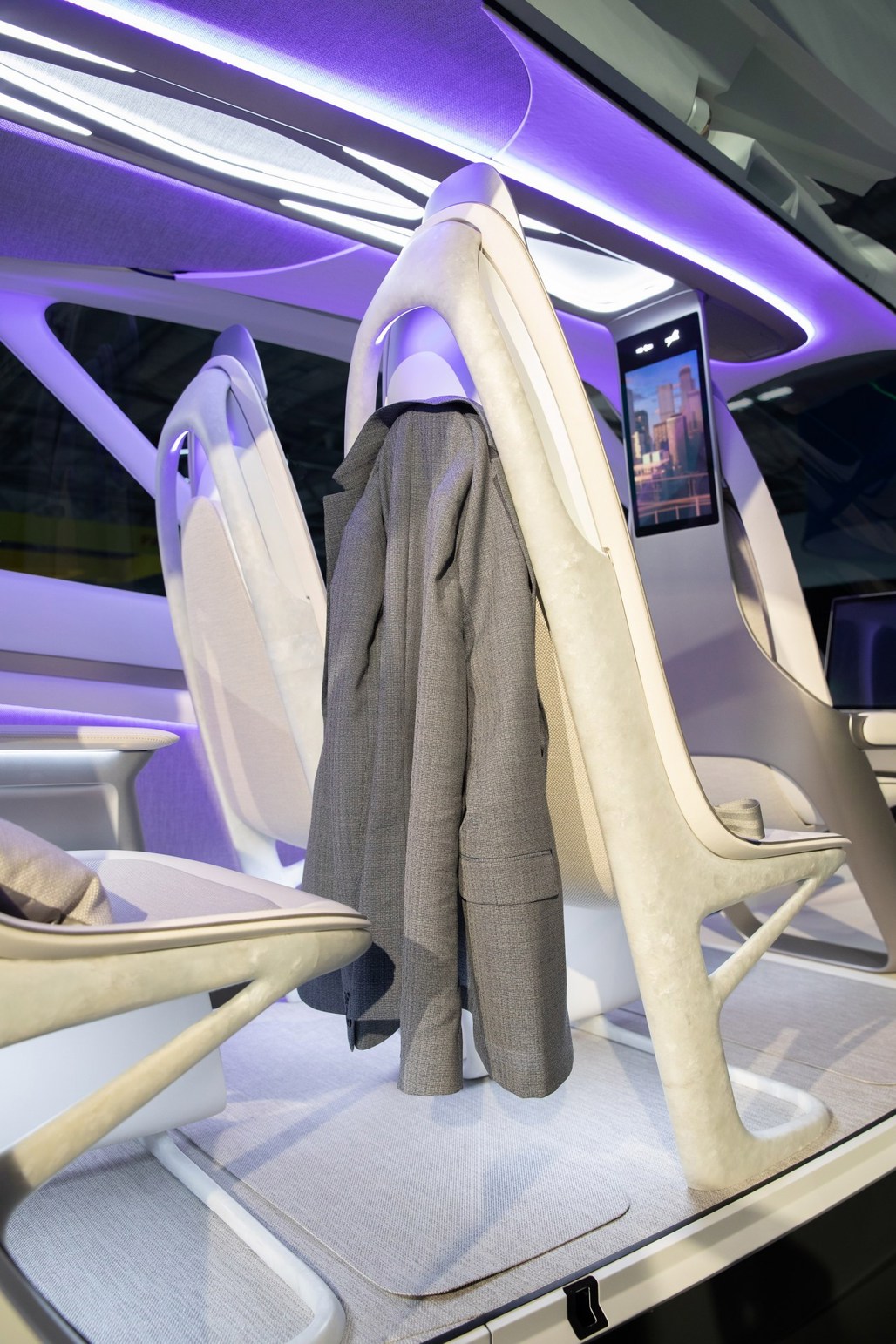Hyundai Motor Group's air mobility company, Supernal, has released the cabin concept for its fully electric aircraft, eVTOL.
The eVTOL cabin concept was showcased at the 2022 Farnborough International Airshow, and is scheduled to start flying commercially in the US in 2028.
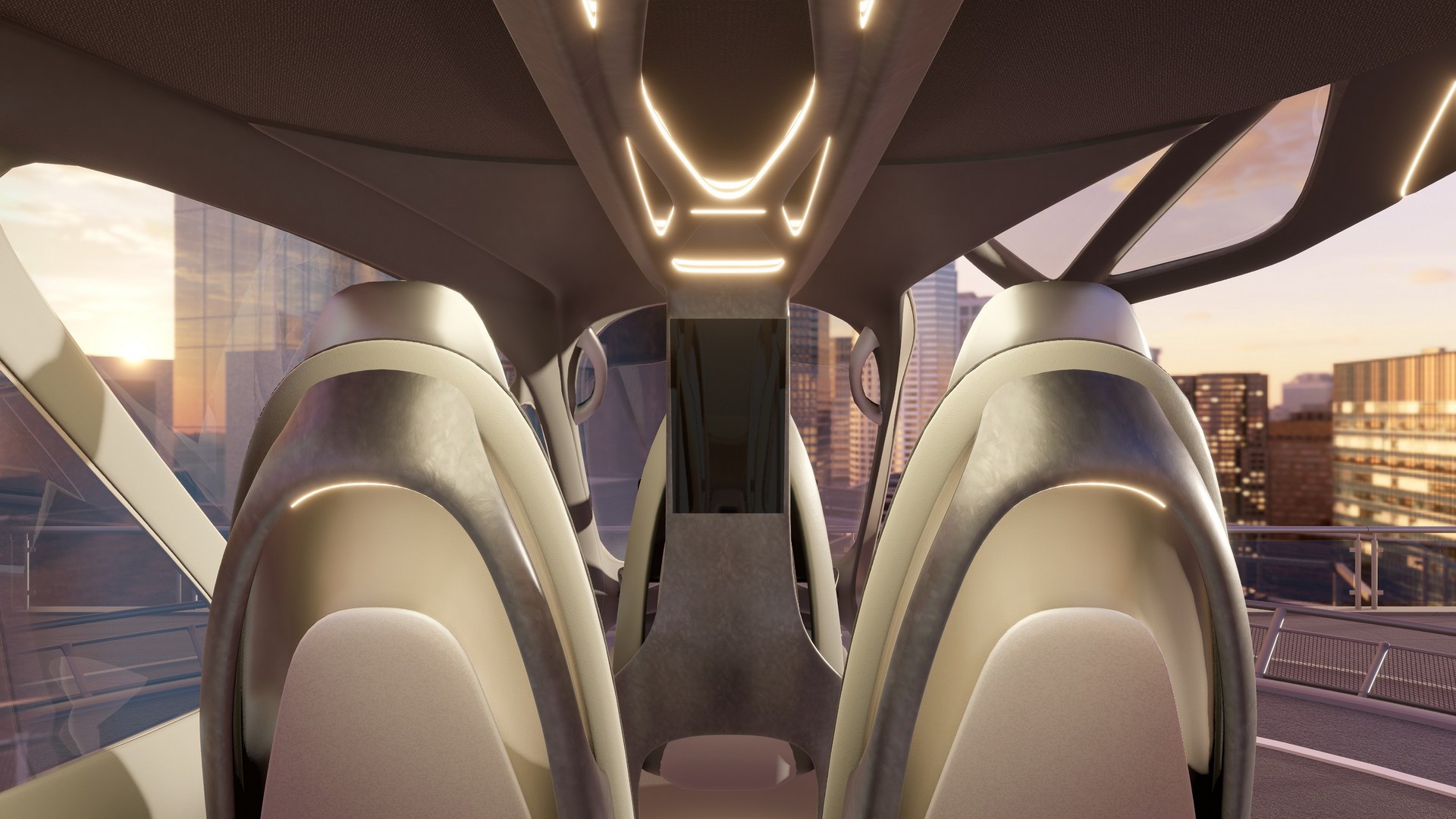
The aircraft, designed for intra-city passenger journeys, was inspired by the “biomimicry philosophy,” or, more specifically, butterflies.
The concept is somewhat reminiscent of a helicopter cabin. It has an aerodynamic silhouette, two large butterfly doors on either side and "organic-shaped" windows.
The lightweight and sustainable design focuses on a human-centric approach, with a safety and comfort-minded cabin intended to be reminiscent of a car.
View Hyundai listings on Driven
Inside, the five seats are configured in a 1+2+2 arrangement, the pilot seat at the front has integrated joysticks. The customer seats, meanwhile, are kitted out with mounts for smartphones on the backs which double as clothes hangers.
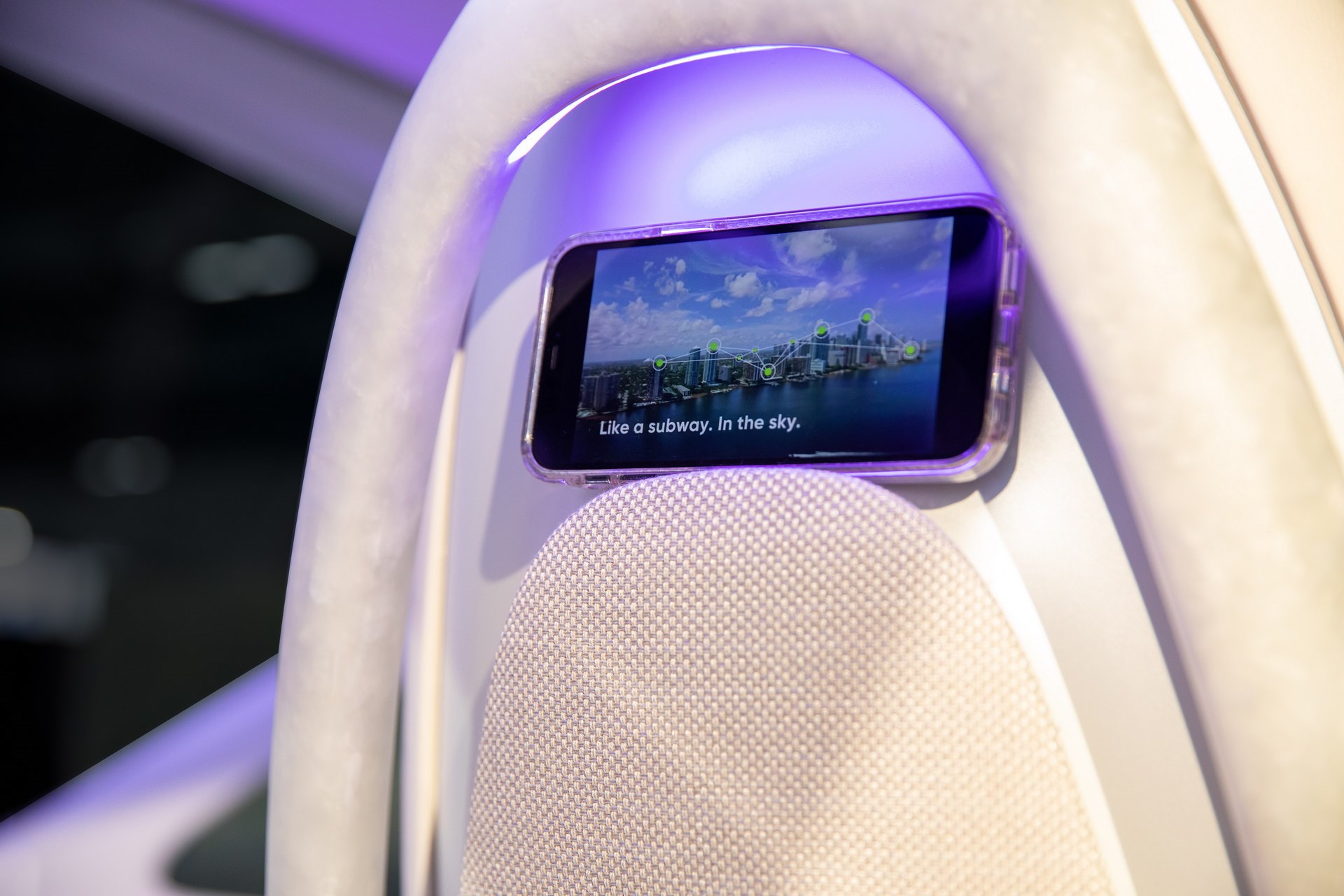
Between the seats are centre consoles that have some controls and touchscreens. There's also a larger screen mounted to the back of the pilot’s seat.
The ceiling features an ambient lighting structure, designed for light therapy.
Sustainability is at the core of the electric aircraft. Its structure is made of forged carbon fibre, and the seat frames are made of excess raw material from the manufacturing process. It also uses materials like advanced recyclable carbon fibre reinforced thermoplastic, plant-based leather, recycled plastic fabric, and responsibly-sourced woods.
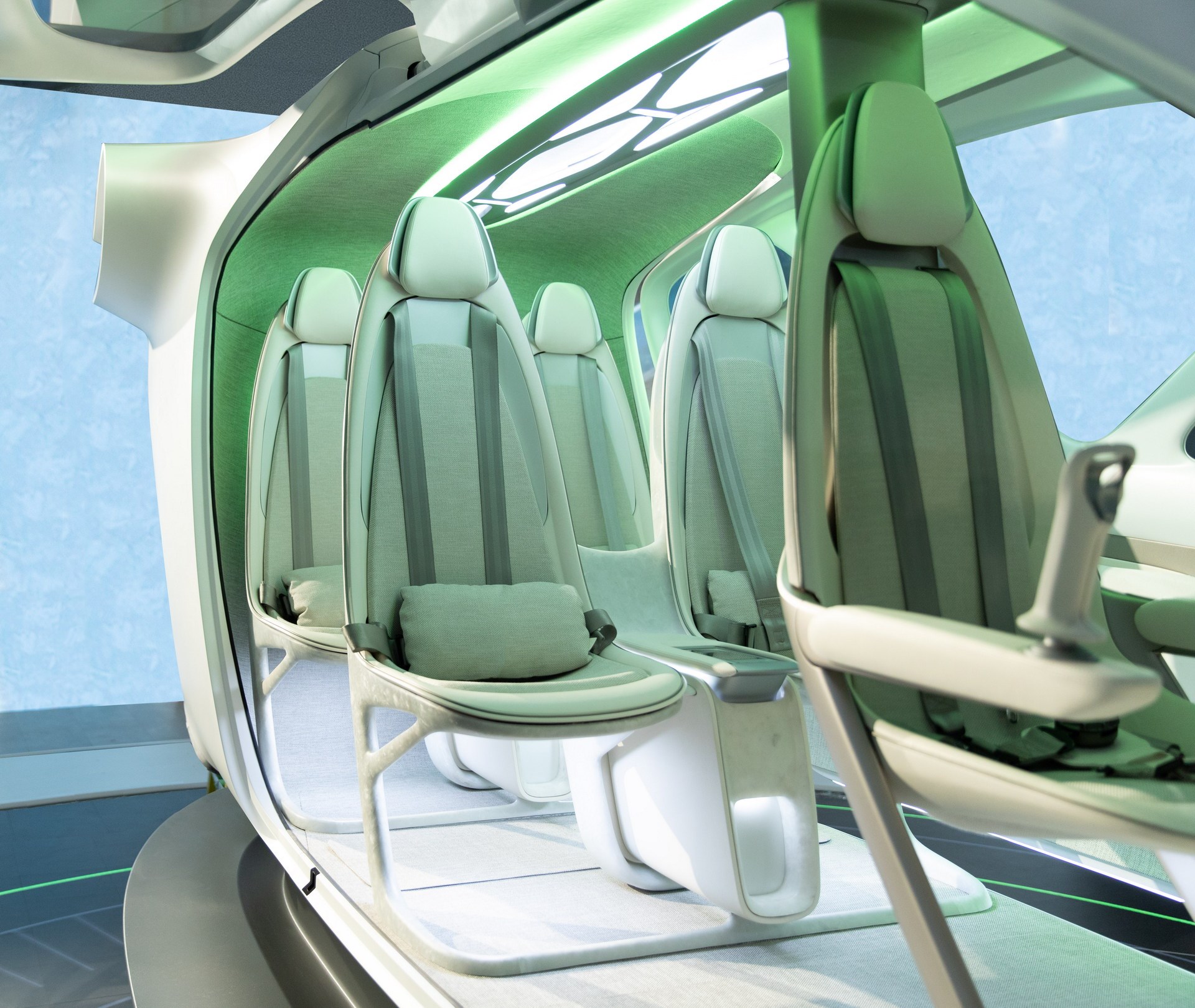
The exterior design is still in the design phase, meaning we currently only know what the cabin concept looks like, but it sounds like it's going to be just as quirky.
Hyundai wants the Supernal eVTOL to be ready and certified for commercial use from 2028 in the United States, with Europe and the UK following shortly after.
